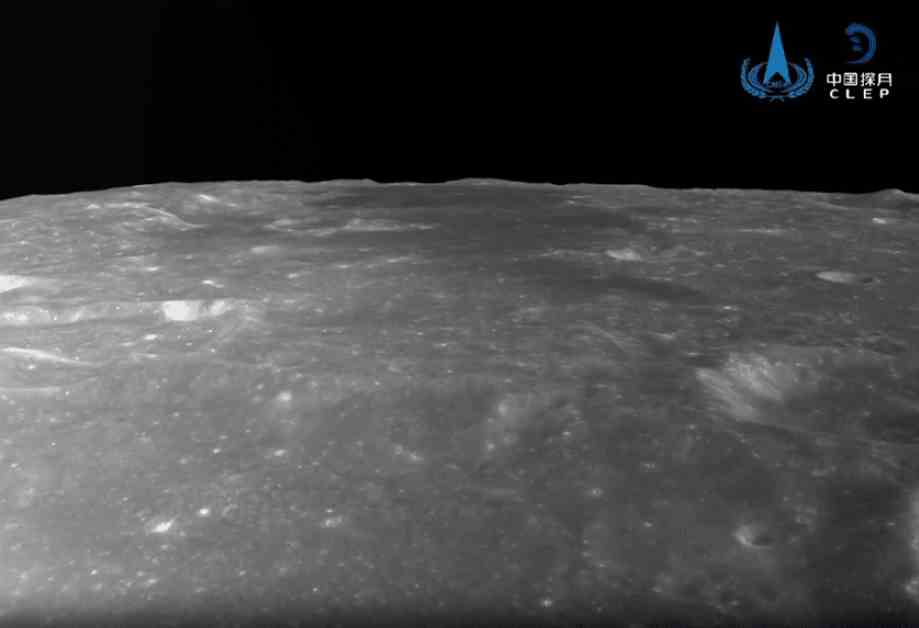Successful Mission on the Dark Side of the Moon
On Sunday, June 2nd at 00:23 (Paris time), the Chinese probe Chang’e 6 successfully landed on the dark side of the Moon. On board was DORN, the first active French instrument on our natural satellite, whose objectives were achieved! After collecting samples of lunar soil, the Chang’e 6 probe took off in the night from June 3rd to 4th to begin its return phase to Earth. Nearly a month after the successful launch from China, and after several days of operations and an intense week of preparations, the French team of DORN was present, both in China and France, to witness the landing of the Chinese probe Chang’e 6 carrying the French instrument. The French representatives on site followed the operations from the National Astronomical Observatory Center (NAOC) in Beijing, in constant communication with the Chinese team at the Beijing Aerospace Command Center (BACC).
Seven hours and a few minutes after the confirmation of the landing on Sunday, June 2nd at 07:30 (Paris time), DORN was successfully re-ignited. After some adjustments, its proper functioning was confirmed by a first set of eagerly awaited measurements by the scientific team. The first French instrument active on the surface of the Moon was able to operate for 23 hours on our natural satellite. The operations, with and among our Chinese colleagues, went smoothly and DORN worked well!
DORN was not new to ignition. On May 5th, two days after leaving Earth, DORN was ignited for the first time for 10 hours during the cruise phase between Earth and the Moon. The instrument was doing very well at that time. On May 8th, the Chang’e 6 probe successfully entered orbit around the Moon. While the next ignition of the French instrument was scheduled for May 19th, solar activity impacted the schedule. Due to the very high solar activity at that time, the ignition was postponed to May 17th for a duration of 3 days, more than initially hoped for. DORN was ignited again on May 23rd and 24th in a circular orbit around the Moon.
DORN’s objective on the dark side of the Moon was to study the origin and dynamics of the Moon’s atmosphere as well as the thermal and physical properties of its soil. Specifically, it was to measure radon and polonium, two radioactive tracers present on the lunar surface. It aimed to study lunar degassing and the transport of gases from the regolith to the lunar exosphere. Radon, a radioactive gas produced continuously in the lunar soil by the decay of uranium, was studied to deduce the uranium content in the Moon’s soil.
Chang’e 6’s main mission, the probe on which DORN was embarked, is to collect samples potentially from the mantle of the dark side of the Moon, as well as ejecta from lunar plateaus (crust material) and basalts from the volcanism that occurred on this dark side 2.4 to 3.4 billion years ago. This should help to better understand the overall composition of the Moon, the dichotomy between its visible and dark sides, and improve the method of dating planetary surfaces.
In the 48 hours following the landing, samples were collected to obtain about 2 kg of regolith, the material that makes up the lunar soil. DORN was turned off while the upper part of Chang’e 6, carrying the samples, took off to join the other section of the spacecraft in orbit. The precious harvest will soon be placed in a sealed capsule and brought back to our planet. The return of the samples to Earth is expected around June 25th.
The samples collected by Chang’e 6 will be analyzed in a laboratory. These analyzes can be compared to what DORN directly measured in the lunar environment.
After half a century, DORN marked France’s return to the surface of the Moon, five decades after the Soviet missions Lunakhod 1 and 2 that carried passive French instruments in 1970 and 1973.
For more information on Chang’e 6 / DORN, visit the CNES project library and the Institute of Research in Astrophysics and Planetology website.



